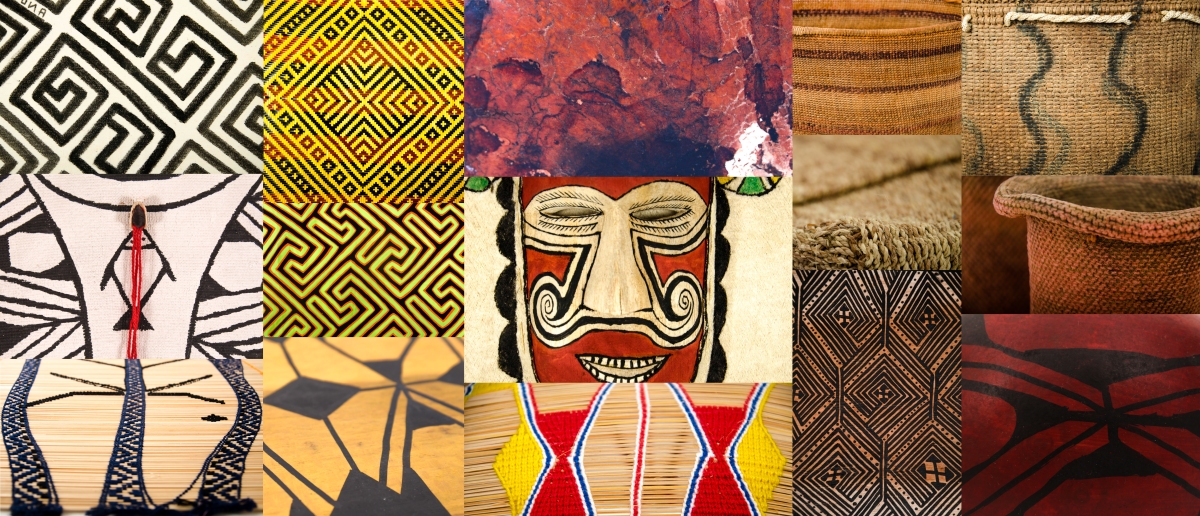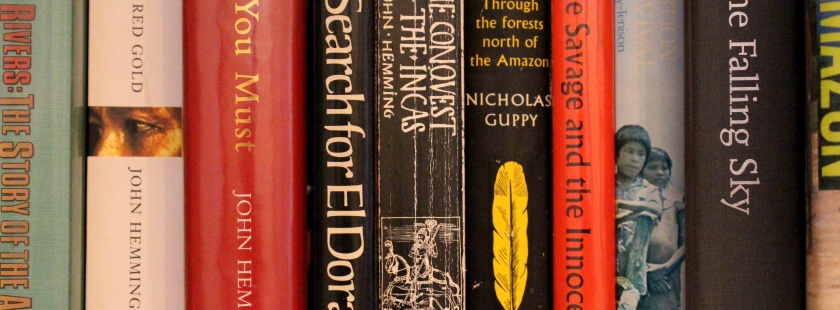Following on from the previous Xapiri blog which gave an overview to Amazonian indigenous art, we would now like to give a slighter deeper insight towards the basketry and weave from this region.
Like so many first nation peoples across the world, basketry and weaving is an important foundation and of one of fundamental importance in Amazonian culture. It is interesting to note that unlike elsewhere in the Americas, for many people of the Amazon, it is basketry rather than pottery that is more widely used and is in turn, the principal art form.
The Form of Content, passage taken from ‘To Weave and Sing’ – David M. Guss:


There is a huge array of basketry and weave all varying in strength, size, purpose and design; from gathering baskets, dart quivers, tipitis and even the woven grips on spears and clubs. By far the most common use for basketry is for the preparation of food and above all the cultivation of cassava; to show an example, the Yekuana tribe of Venezuela have at least 10 types of baskets solely devoted to processing this staple and all so important root!
‘ There are many gods, many spirits, and many people who live above the earth and below the earth. I know them all because I am a great singer. There is the one who created the baskets, and the baskets began to walk, and they entered the water after having eaten many Indians. They are the cayman alligators – you’ve only got to look at their skins to see that. An Indian doctor saw this spirit creating the first basket, and be managed to escape in time to avoid being eaten. It was a Yekuana. That’s why our baskets are better made than anyone else’s. ‘
– Kalomera (Yekuana Leader), quoted by Alain Gheerbrant, Journey to the Far Amazon.
Always original, not one basket is ever the same within the same tribe or even from the individual artist! Each ethnic group have their own style of weave, symbology and dyes that our used. We must note that behind each basket is the artist and the basketmaker; the time consuming process of gathering and preparing the raw materials, before the detailed and complex construction of the weave begins. Through Xapiri, we wish to help preserve these ancient skills by working closely with the artisans, developing the marketplace and intern, increasing the appreciation and demand. Managed correctly and sustainably, we can revive and maintain the artisanship within the communities we are working with to ensure a positive future for this dying craft.

In Amazonian village life, the division of labour is generally quite clear, the women will cultivate the crops and cook where the men traditionally hunt, fish and slash / burn the land. However, when it comes to basketry the production can be split. It may be commonly associated with female creation but quite often it is the men who produce the most elaborate and better quality baskets. The creation of basketry can have both a social and cosmological significance, the basket can be a metaphorical representation of the world so the act of weaving can involve cosmic reproduction and powerful spirits! This idea that basket making is more than just a weaving process is wildly found throughout the Amazon.
The geometric and stylised designs may appear to the untrained eye as just simple decoration but to the individual artist, each weave is an opportunity to represent the mythology of the jungle. For the indigenous makers, this is a form of illustration and is comparable to symbols they may paint or carve. Many elements can be seen; the jaguar and its spots, snakes such as the anaconda and other reptilian like the caiman, monkeys and frogs are amongst the most common.
A Reading suggestion:
Basketmakers: Meaning and Form in Native American Baskets.
This book gives an in-depth look at the Native American basket collection at the Pitt Rivers Museum in Oxford, U.K. Detailed descriptions accompanied by photographs and illustrations show a wide variety of basketry across North, Central and South America. exploring the range of material and technique across there Americas the book examines each culture and thus shows how extremely diverse they all are.
An excerpt from the book, written by Linda Mowat;
‘ Before a basket can be made, its components must be gathered and prepared for use. For a Native American basketmaker this take as much time as constructing the basket itself, or even longer. Materials must be gathered at the right time of year and it may be necessary to travel a considerable distance to find them. Hard physical labour cane involved in collecting wood, shoots, roots, bak, grasses and leaves. Removal of extraneous matter, splitting or gauging into suitable widths and dyeing with natural or even chemical dyes are all time consuming processes. Prepared materials must be dried and stored correctly so that they do not decay and before use they may need soaking to restore their flexibility. Only after all this preparation can the business of basketmaking begin.’
Illustration taken from the book, showing a selection of the various Native weaving techniques:

In future posts, we will give similar overviews of the different artistic outputs in Amazonian indigenous culture before we look more closely at the art production from tribe to tribe.





